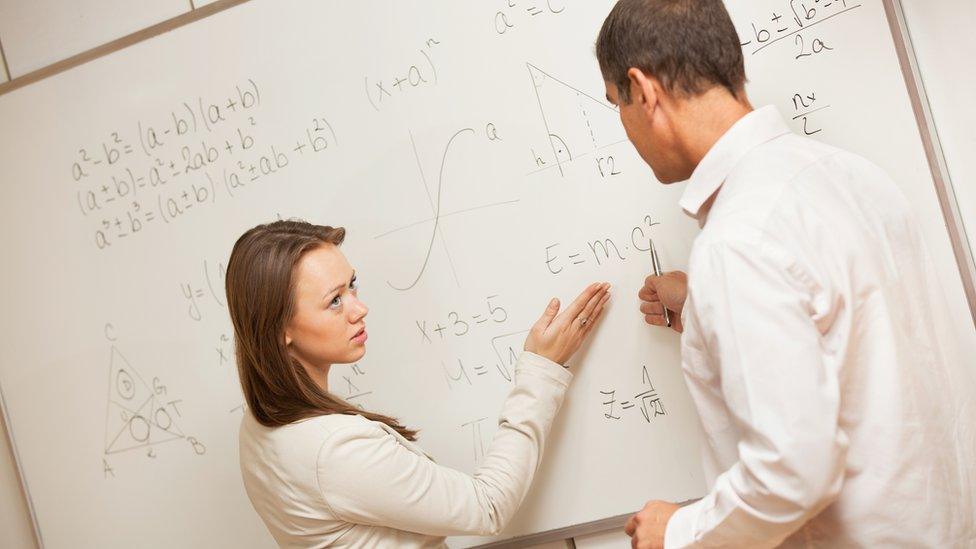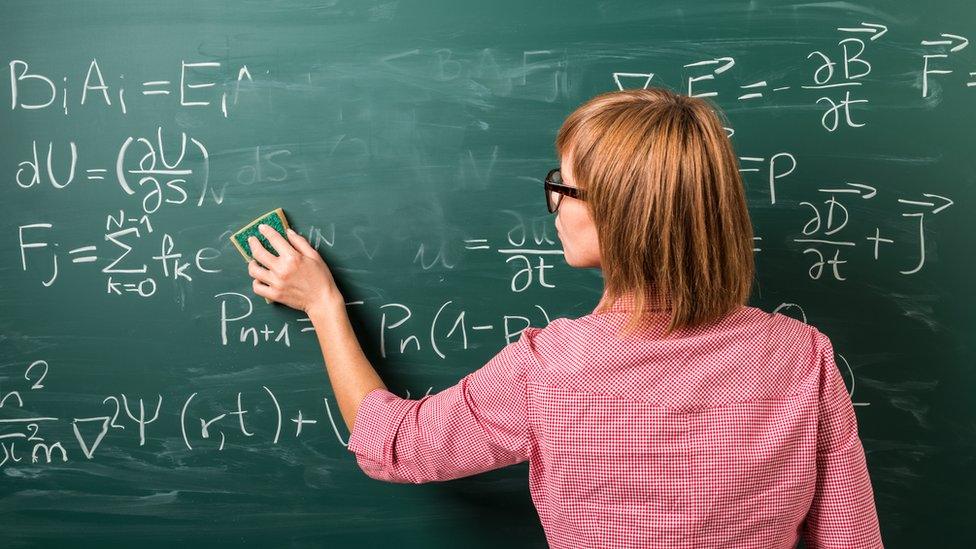How physics gender gap starts in the classroom
- Published

Some progress has been made in encouraging girls to study physics at A-level, according to a report by the Institute of Physics (IoP).
In 2016, 1.9% of girls chose A-level physics, up from 1.6% in 2011.
But that compared with 6.5% for boys in 2016 and 44% of schools in England still send no girls at all to study the subject.
The IoP said physics-based skills were essential for many future careers, from artificial intelligence to aerospace.
However, the gender balance at physics A-level in England's schools has changed little in decades, with only 20% being female.
"There is no evidence to suggest any intrinsic differences in ability or interest to explain why girls and boys choose technical subjects differently," said IoP President, Prof Dame Julia Higgins.
"The consequences of girls' choices at school are that many rewarding and fulfilling routes are closed off to them."
Snapshot
The report, Why Not Physics? - A Snapshot of Girls' Uptake at A-level, found only 1.9% of girls chose A-level physics in 2016, compared with 6.5% of boys.
In 2011, 1.6% of girls chose the subject, compared with 6.1% of boys.
In contrast, 8% of girls and 12.3% of boys progressed to maths A-level. In subjects such as English and psychology, the trend is reversed, with far more girls than boys choosing the subjects.
The report makes a number of recommendations:
Schools should routinely monitor by gender the numbers of students progressing to physics A-level
They must make serious efforts to address problems where they exist and challenge gender stereotypes and unconscious biases
The IoP is hosting a summit on Thursday to tackle gender inequality in the classroom and to debate new ways to close the gender gap in the take-up of physics A-level.
"An ill-judged quip that girls 'can't do maths', or 'physics is too hard', can lead to girls making life-changing decisions that alter the subjects they study or the career they pursue," said Prof Higgins in a foreword to the report.
"Women in physics are still in the minority, and this lack of visibility preserves the myth and cements the fact that physics is simply not a subject for girls."
Skills gap
The lack of girls studying physics to a higher level also had consequences for the UK economy, the report said.
Physics-based skills are required in many growth areas, from aerospace to artificial intelligence, and thousands more workers need to be trained every year to keep the UK economy competitive.
A recent study found that closing the gender gap in physics would take hundreds of years, given the current rate of progress.
Research analysing the names of authors listed on millions of scientific papers found physics, computer science, maths and chemistry had the fewest women, while nursing and midwifery had the most.
Without further interventions, the gender gap was likely to persist for generations, said scientists from the University of Melbourne.
Forecasts suggest it will take a very long time to close the gender gap in some fields, with predictions of 320 years for nursing, 280 years for computer science, 258 years for physics and 60 years for mathematics.
Follow Helen on Twitter, external.
- Published20 April 2018
